Best of Both Worlds/Hardware of Both Worlds
BMW has been a pioneer in electric cars, offering the unusually styled i3 hatchback since 2014. Although not a big seller, it was a good first attempt in a tricky market. Many more battery-only, gas-free EVs are coming in the market, and for now, you can select from multiple BMW plug-in hybrids, including the 330e.
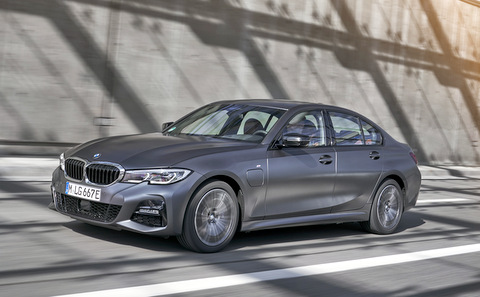
As a plug-in hybrid vehicle (PHEV), the BMW 330e combines an engine and a motor. The former is a 2.0-liter four-cylinder turbocharged gas burner that puts out 181 horsepower (hp) and 258 pound-feet (lb.-ft.) of torque. It’s connected to an integrated electric traction motor that adds 107 hp and cranks out 77 lb.-ft. of torque. Combined output is 288 hp and 310 lb.-ft. of torque.
A high-voltage 12 kilowatt-hour lithium-ion battery lives under the rear seats and powers the motor. The automatic transmission features eight forward gears, so it can electronically choose the most efficient gear for the current driving situation.
The U.S. EPA awards the 330e with 75 MPGe using electricity plus gasoline, and a more modest 28 mpg using gasoline alone. The official electric range is 23 miles, with a total range is 320 miles. The EPA Green scores are 7 for Smog and 8 for greenhouse gas. The sticker says you’ll save $1,000 over five years compared to the average car.
The Electric-Only Option
Because it’s not a full-electric car, the battery is not large, so you can’t go too far on electricity alone. With about 23 all-electric miles, it’s perfect for commuting, shopping and errands. When you take it on longer trips, the 330e spends more time as a hybrid, using gas and electricity efficiently.
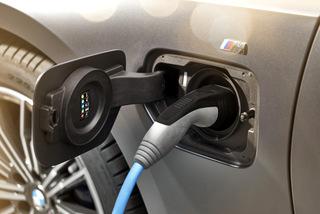
When you plug the car in to charge, it takes only a couple of hours at 240 volts (Level 2) or overnight on regular household current (Level 1). No need to invest in a dedicated charger—just plug it into the garage wall before you go to bed, and you’ll be fine in the morning.
On my first trip, I set the control in my Alpine White test car to “Electric” so it would use only electric power. When it ran out of juice at 22 miles, it automatically switched to “Hybrid” mode, informing me of the change on the large center dash screen. As my destination was 24 miles from home, I almost made it petrol free. If I had been able to use a charger at my destination, I could have driven on battery power for most of the way home. The mostly gas-powered return trip was nearly as quiet as the electric leg of the trip, which shows that the gas engine is smooth and quiet, and that BMW has used plenty of sound insulation.
The car starts out in hybrid mode by default, so if you want to drive with electrons only, you should push the “Electric” button on the center console to keep the gas engine at bay.
Another Trip
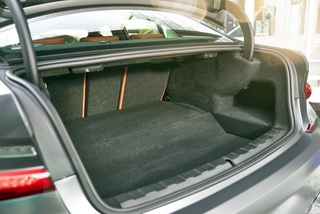
My second trip in the BMW was to spend a couple of hours rehearsing with my three bandmates, who, through careful planning, became part of my COVID bubble (before the current lockdown). Because the drummer’s house is only 4.2 miles away, I was able to drive both ways without using any gasoline. That’s what makes plug-in hybrids so appealing—you get a lot of electric driving, but never any range anxiety.
The downside of a PHEV is that you may have the best of both worlds, but also must lug along the hardware of both words—engine + motor, battery + fuel tank, radiator, motor oil, etc. and occasionally take the car in for service on those components. Battery-electric cars have little service other than tire rotations and car washes.
All BMW
The 330e is a BMW through and through—both in its exterior styling, with a reasonably proportioned twin kidney grille and Hofmeister kink in the rear side window—and inside. BMWs have edgier interiors than they used to, but everything is up-to-date and electronic. You still control the dash screen with a dial on the center console surrounded by buttons. While the driving experience is enjoyable and straightforward, there’s still a learning curve to program the numerous custom features and build a set of favorite radio stations. German engineering brings with it German complexity.
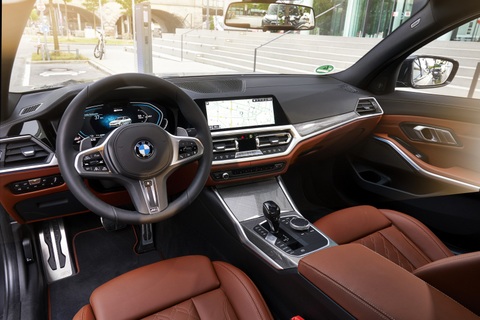
My tester came with numerous upgrades. The Cognac Vernasca Leather inside ($1,450) looked and smelled wonderful. The Dynamic Handling Package ($1,400) sportified the brakes, suspension and steering. The Drivers Assistance Pro Package ($1,700) offered the Extended Traffic Jam Assistant (I didn’t have an opportunity to try this BMW version of adaptive cruise control). The M Sport Package ($3,800) included the SensaTec Dashboard and more. The Parking Assistance Package ($700) included handy surround view with 3D View in the center console, helping you know exactly where the car is when you’re backing up, parking and so on. The Executive Package ($2,600) included things like a heated steering wheel (with the button right on it, easy to find), adaptive LED headlamps, a head-up display, active blind spot detection and gesture control. The latter lets you program what happens if you wave two fingers at the dashboard, for example, instead of looking over and finding a button.
The base price for the 330e is $44,500, but with all the extras, my tester came to $59,645.
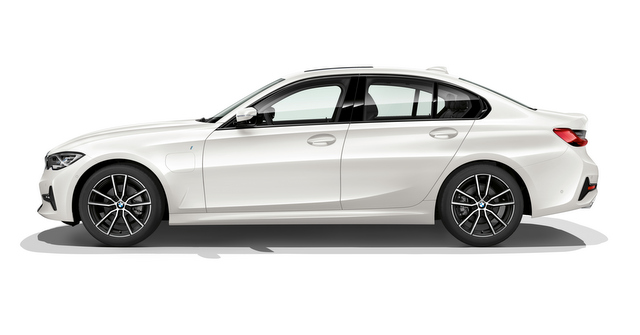
I believe that people buy and love 3-Series BMWs because of the model’s long history as The Ultimate Driving Machine®, although it has become larger and less sprightly over the years, as most 45-year-olds tend to do. I drove my first 3-Series test car in 1992, shortly after I started writing my car column, and I was blown away. My older son enjoys his, and I’m hoping to move him into a 330e when his lease is up. My younger son’s first car was an older 3-series coupe. And an all-electric 3-series is rumored to be in the works.
While a regular hybrid can take away half a car’s CO2 emissions, a plug-in hybrid, driven locally most of the time, can do even better.
Story by Steve Schaefer; photos from BMW
Make sure to opt-in to the Clean Fleet Report newsletter (top right of page) to be notified of all new stories and vehicle reviews.
Related Stories You Might Enjoy—Growing PHEV Options
Road Testing: Comparing HEVs, PHEVs & BEVs
Road Test: 2020 Kia Niro Plug-in Hybrid
Road Test: 2021 Toyota RAV4 Prime PHEV
Road Test: 2020 Hyundai Ioniq Plug-in Hybrid
Road Test; 2020 BMW X3 xDrive303
Personal: To PHEV or Not PHEV—That Is the Question
News: Ford Released Details on Plug-in Hybrid Escape
Road Test: 2020 Toyota Prius Prime PHEV
Road Test: 2020 Volvo S60 T8 AWD Plug-in Hybrid
Road Test: 2019 Honda Clarity Plug-in Hybrid
Disclosure:
Clean Fleet Report is loaned free test vehicles from automakers to evaluate, typically for a week at a time. Our road tests are based on this one-week drive of a new vehicle. Because of this we don’t address issues such as long-term reliability or total cost of ownership. In addition, we are often invited to manufacturer events highlighting new vehicles or technology. As part of these events we may be offered free transportation, lodging or meals. We do our best to present our unvarnished evaluations of vehicles and news irrespective of these inducements.
Our focus is on vehicles that offer the best fuel economy in their class, which leads us to emphasize electric cars, plug-in hybrids, hybrids and diesels. We also feature those efficient gas-powered vehicles that are among the top mpg vehicles in their class. In addition, we aim to offer reviews and news on advanced technology and the alternative fuel vehicle market. We welcome any feedback from vehicle owners and are dedicated to providing a forum for alternative viewpoints. Please let us know your views at publisher@cleanfleetreport.com.

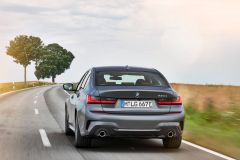
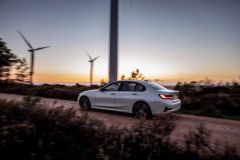
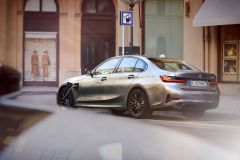

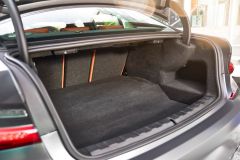
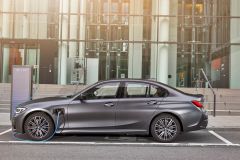
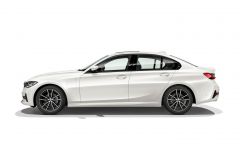

10 thoughts on “Road Test: 2021 BMW 330e Plug-In Hybrid”